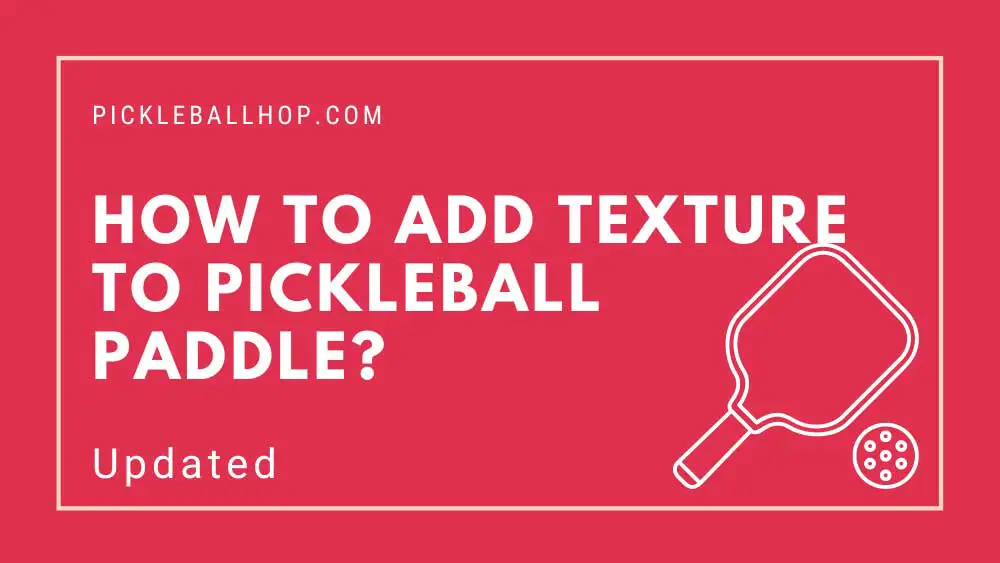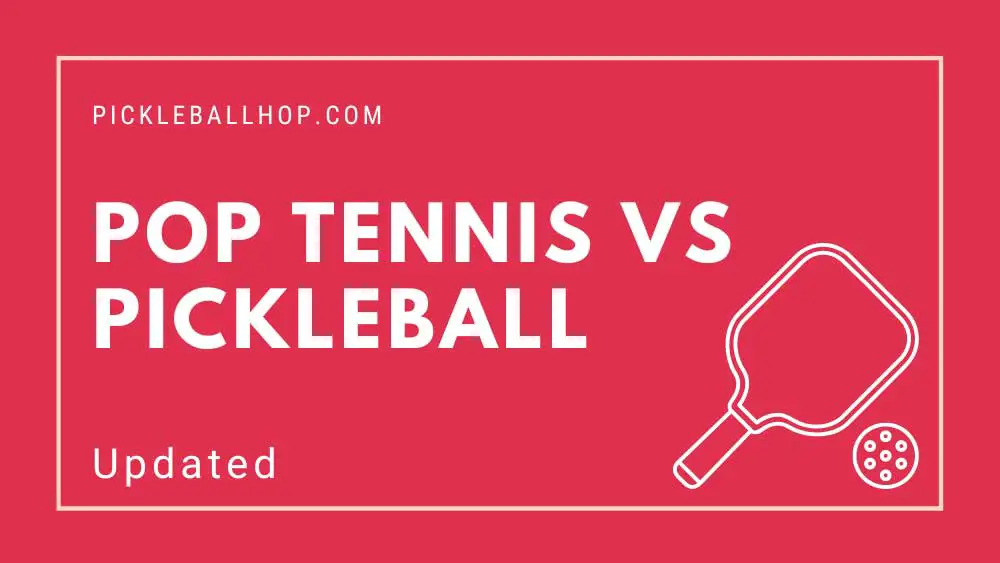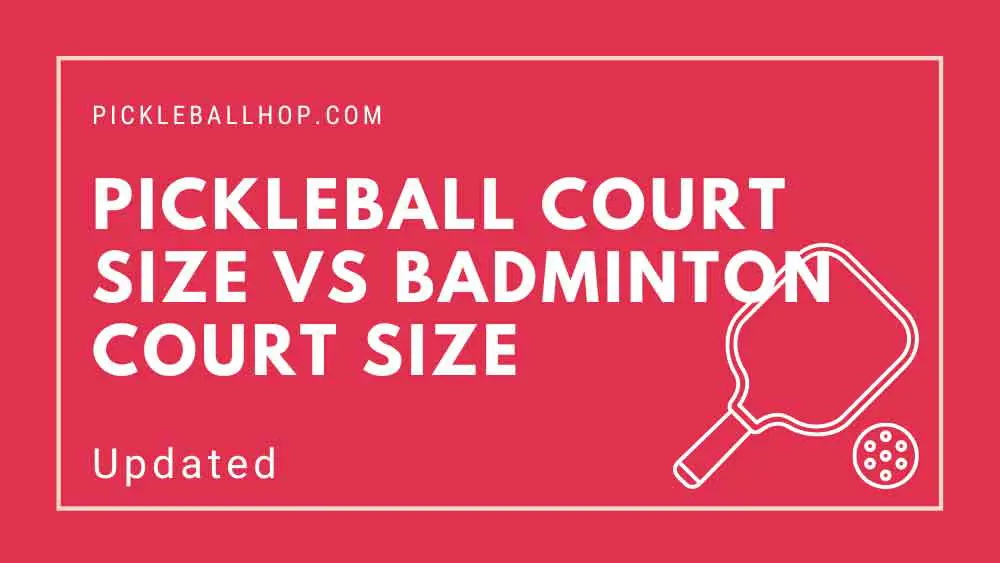Pickleball Noise: A Challenge
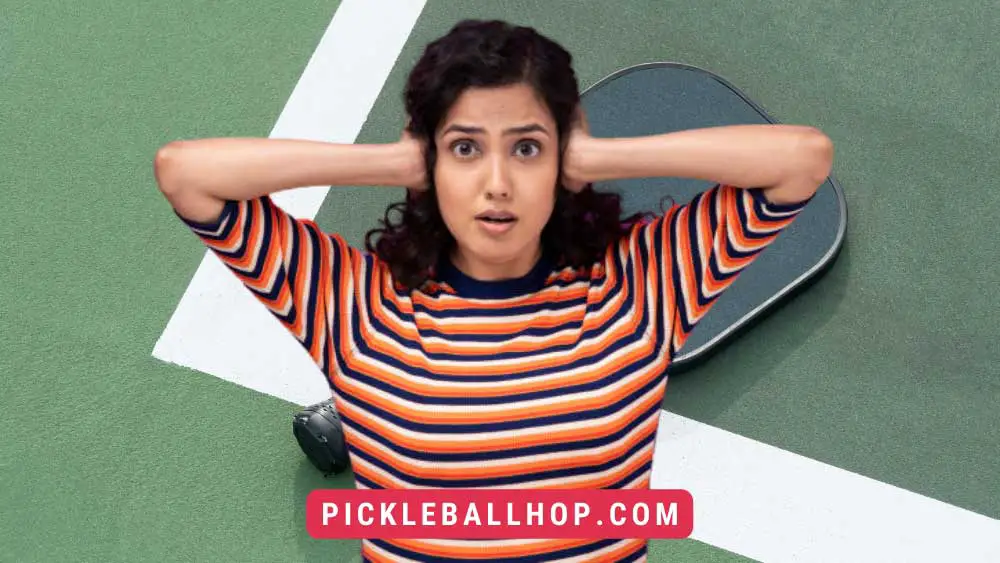 Pickleball is more pleasant for the body than tennis due to its smaller court and short, underhand swing. It’s a fun, active, and social event thanks to the popular doubles format and quick games.
Pickleball is more pleasant for the body than tennis due to its smaller court and short, underhand swing. It’s a fun, active, and social event thanks to the popular doubles format and quick games.
Almost anyone can play the game, regardless of their age or ability. There’s nothing to dislike, so what’s the problem?
THE NOISE seems to be a growing consensus.
A pickleball noise lawsuit was filed by a woman alleging that she suffered severe mental suffering, frustration, and anxiety due to the sound of people playing Pickleball close to her home.
It was claimed by another couple that pickleball play late at night interfered with their enjoyment of it.
Pickleball, America’s new favorite sport, is, unfortunately, the current reality.
There are conversations, understandings, and values in a peaceful world. There are misunderstandings, invalidations, exclusions, humiliations, and physical injuries in a Noisy World.
You may enjoy reading How Much Do Pro Pickleball Players Make?
I don’t think I can find a better sport than Pickleball for the noise it produces. However, let’s talk about how all participants – particularly neighborhood listeners – can benefit from the sport.
Let’s start by defining some terms.
What is Noise?
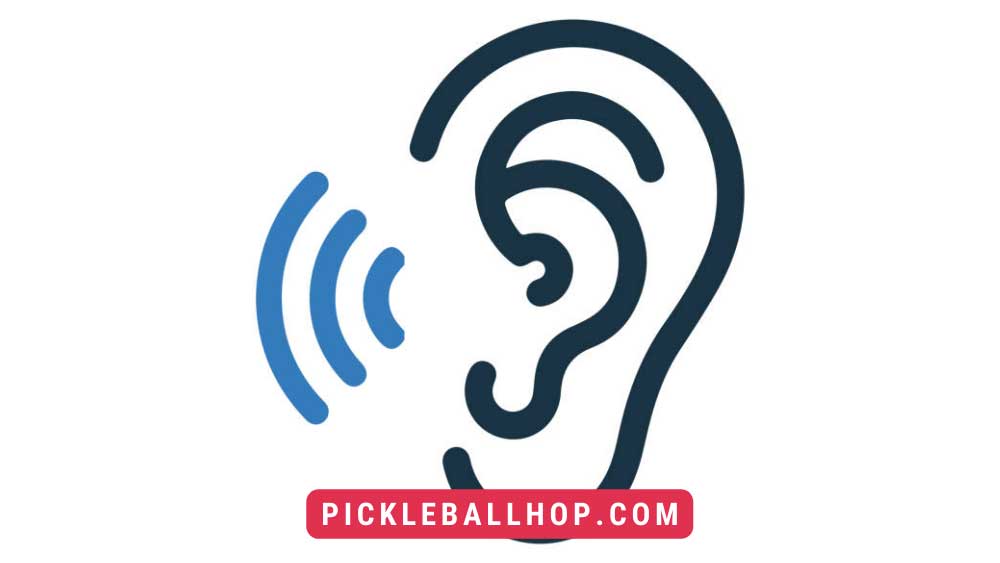 Hearing disturbances caused by unwanted sounds are known as noises.
Hearing disturbances caused by unwanted sounds are known as noises.
The measurement of wanted sound (concerts) and unwanted sound (noise from surrounding areas) is the same. The decibel (dB) meter measures and expresses sound pressure level, 0 dB being the threshold of hearing.
The ambient noise level in an active community is about 40-50 decibels, even though it differs in the early morning and late evening. On the lower end of the scale are rural communities, and on the higher end are suburban communities.
Take a look at this example of a Pickleball Noise Study
Oakmont Village, a Santa Rosa, CA community, commissioned a Pickleball sound study in 2017.
In order to determine if the noise was within town code, they needed to assess decibel levels on 6 tennis courts with and without Pickleball play.
The decibel levels ranged between 43 and 49 dB when 24 active Pickleball players were whacking away. When Pickleball is not being played, ambient noise levels are measured at 40-48 dB. From the decks and patios of the neighbors, these measurements were taken.
Though the decibel levels of Pickleball were not that high compared with ambient noise, in this case, neighbors still perceived the noise as intrusive.
Even though the courts were within city noise ordinances, the community planned to add some sound dampening features.
In Oakmont Village, every member of the community was respected and the plan was carefully thought out.
You may enjoy reading Can You Play Pickleball On Grass?
Pickleball noise: where does it come from?
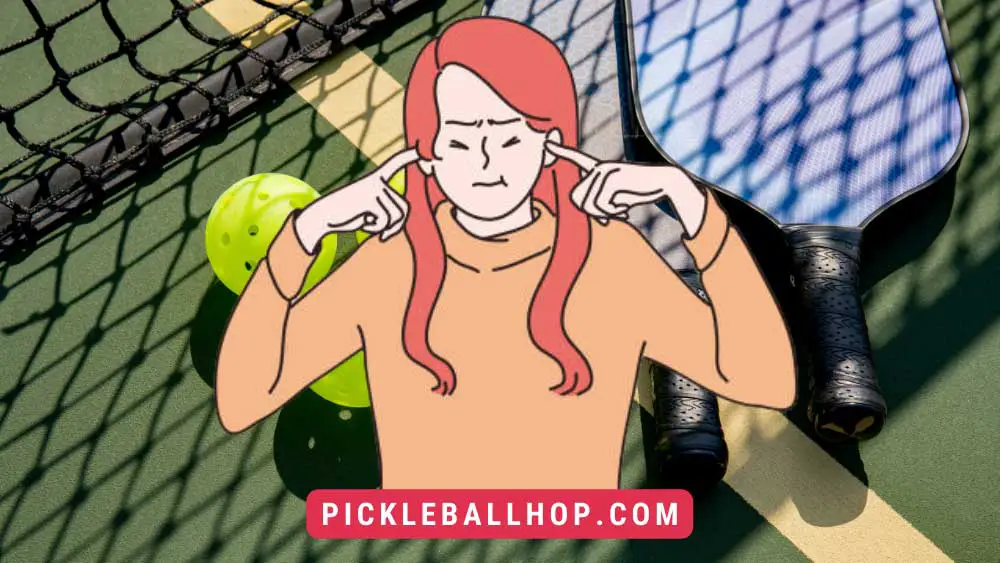 Additionally, the Pickleball paddle & ball are the main culprits of noise, along with the occasional hollers and laughter from the Picklers.
Additionally, the Pickleball paddle & ball are the main culprits of noise, along with the occasional hollers and laughter from the Picklers.
In many neighborhoods, you can locate Pickleball courts by listening for that joyful ‘pop’ sound made when the ball hits the paddle.
In the early morning or late at night, neighbors are not always as enthusiastic about the ‘Pickleball Pop’.
It’s not so much the decibel levels as it is the high pitch of the Pickleball that makes it annoying to the human ear.
The paddles and balls used in Pickleball are made of materials that are 20-25 decibels louder than those in tennis. The sound of a shot can be loud even without much force behind it.
Pickleball Noise complaints will determine pickleball’s future
The Pickleball equipment manufacturers are paying attention to the noise issue and are taking action.
To ensure the growth of the sport, it is crucial to create equipment that is quieter so that players can access courts in smaller communities.
Furthermore, it implies that local governments need to work hard to find solutions that respect the rights of each and every stakeholder – both Picklers and neighbors – in this situation.
Solutions to Pickleball noise consist of:
- Paddle Options
- Ball Selection
- Court Placement Planning
- Sound Barriers & Fencing Mitigation
- Muzzles for Players (Just Kidding)
Pickleball Paddle Noise
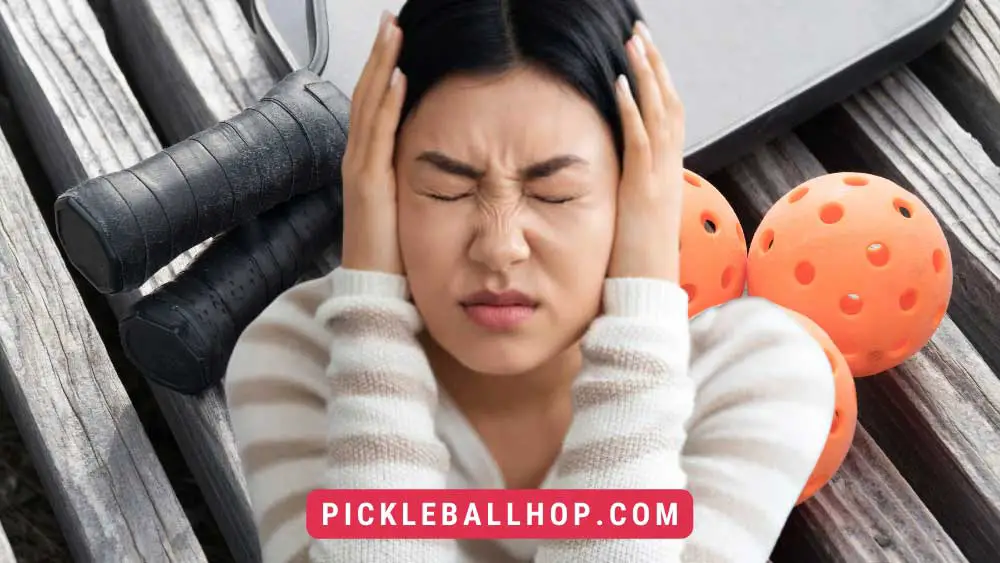 Paddles with lower pitch sounds are being sought by communities around the world as technology advances.
Paddles with lower pitch sounds are being sought by communities around the world as technology advances.
Sun City Grand, a resort-style community in Arizona, has approved many manufacturers to market paddles as quiet or “Green Zone”.
An acoustic engineering company, hired by Sun City Grand in 2012, helped determine which paddles were producing unacceptable noise as a result of Pickleball in the community.
It is now widely adopted as the ‘Green Zone Pickleball Paddle List’ created by Sun City Grand. Paddles are divided into three categories from green to yellow to red on this list.
You may enjoy reading Wilson Tour Pro Pickleball Paddle Review
This list is updated and provided free of charge to other communities by Sun City Grand. The USA Pickleball Association only measures paddles approved for tournament play.
Nearly ten years ago, Sun City Grand addressed paddle noise scientifically, benefiting the Pickleball community. Respect for all members of their community is one of the approaches they are emulating throughout the USA.
You may enjoy reading How To Become A Professional Pickleball Player?
What is the USA Pickleball Association doing about pickleball paddle noise?
It is only to determine whether a paddle is acceptable for recreational or tournament play that the USA Pickleball Association (USAPA) publishes a paddle list.
A list of approved ‘Quiet Paddles’ is not currently available from the USAPA, but surely they are working on it? Maybe a scientific study in a wind tunnel using a specific ball at a specific speed?
That’s interesting.
USAPA doesn’t seem to be interested in flexing on paddle noise or even talking about it. It is possible that the association’s major sponsors are manufacturers since it is an industry group.
In order to maintain Pickleball’s status as the “fastest growing sport in America“, the USAPA will need to address Pickleball noise publicly soon.
You may enjoy reading Why Are Pickleball Paddles So Expensive?
Alternatives to Quiet Pickleball Paddles
Paddles such as Master Athletics’ Quiet One (Q1) are not on either USAPA’s or Sun City Grand’s Green Zone lists.
“According to our company’s founder David Kjeldsen, most of our current customers are country clubs that have platform tennis courts and are trying to install pickleball courts in them. There are complaints from their members, golfers, tennis players, and pool guests about the noise.”
With the Q1, echo is reduced and pitch is lowered. The extra spin is enjoyed by those who make use of it, but opponents complain that it gives them an unfair advantage.
In addition to the significant performance improvement, Kjeldsen says, “We’ve reduced noise by a significant amount so as to make our customers happy.”
It’s important to note that peace & quiet don’t come cheap. There is a retail price of $189.00 for the Quiet One at Master Athletics.
You may enjoy reading What Is The Best Material For A Pickleball Paddle?
Pickleball Ball Noise
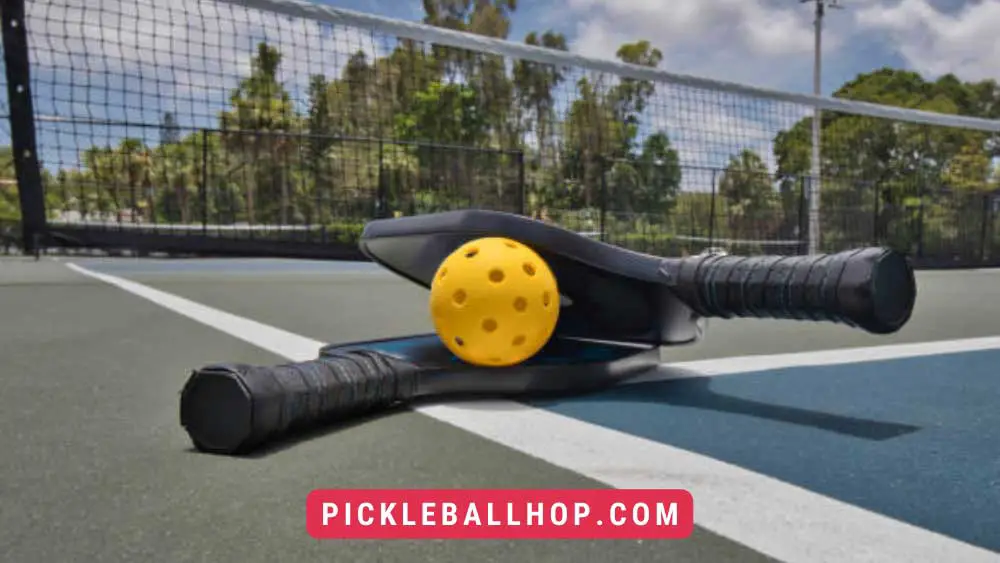 Have you got the Balls to be Different?
Have you got the Balls to be Different?
It’s not entirely the paddle’s fault, to be honest. There is also a problem with the ball. Pickleball manufacturers may adjust the bouncing participant over time if the noise issue persists.
Indoor and outdoor pickleball balls are available.
Indoor balls are like shelters. There is no love lost between these bouncers and rain, snow, and wind. Additionally, they have a smaller size, softer and lighter feel, and are only 26 holes long. The fact that they are quieter and easier to control also contributes to longer rallies. Getting hit by one hurts less than getting hit by a car!
Outdoor balls have 40 holes, and are larger, harder, and heavier. Windy conditions do not hinder their travel. Moreover, they have a shorter lifespan, are louder, and are harder to control. Cold weather makes them more prone to cracking.
When you can lead the evolution, why follow the rules?
Gamma Foam Quiet Pickleball is an example of an evolved ball.
Foam is used instead of plastic to make these balls. Tournament balls aren’t approved for use with these balls because they play differently than rule-abiding balls.
A simple solution to noise complaints is to change the ball. However, serious players and tournament players might not agree with this.
You may enjoy reading Best Selkirk Pickleball Paddles
What is the Quietest Tournament Approved Pickleball Ball?
Most major tournaments use ONIX’s Dura Fast 40 ball, which is a hard, heavy, crack-prone ball, making it the preferred ball of high-level players. Pickle-Ball Inc. was acquired by ONIX in 2019 and the Dura brand continues to be sold under this brand.
As a result of a sponsorship partnership with the USA Pickleball Association, the Franklin X-40 has become the “Official Ball” in 2021. Additionally, this is a hard, heavy ball that cracks easily.
Outdoor Pickleball balls that are softer generally mean they will be quieter, but high-end outdoor balls aren’t necessarily softer.
It is possible for players to strike a balance. You can choose from a number of tournament-approved balls if noise reduction is a priority.
ONIX Fuse G2, a relatively new outdoor ball, is the softest and most popular outdoor ball USAPA has approved for tournament play. Unfortunately, ONIX Pure 2 balls aren’t approved for tournament play – they bounce like jackrabbits.
As a result of the low bounce (similar to the Dura Fast 40) of the Fuse G2, it enables it to be used straight out of the pack, without conditioning. Using the new ONIX Fuse G2 Pickleball, players can play indoors and outdoors with the same consistency.
Using sound barriers and space planning to reduce pickleball noise
Noise can be reduced with enough space. The placement of new courts at a distance appropriate to residential areas is an excellent solution for community planners.
The orientation of the court matters. A Pickleball court’s end produces more noise than its sides because of the way sound travels.
Planning ahead and understanding what affects noise are necessary to implement the solutions above.
There are other solutions needed for courts that are close to their neighbors.
The construction of acoustic fabric walls and fencing is a suitable solution in existing situations. It is also helpful to landscape with trees and berms.
There was a 10-decibel reduction in pickleball noise after the installation of the AcoustiFence (by Acoustibloc).
Pickleball noise can be reduced through these means, but some of these solutions are expensive and time-consuming.
The importance of planning cannot be overstated.
The city of Salinas, CA, has a detailed noise report regarding a proposed high school rebuild, which demonstrates how they understand the importance of ‘noise’ from all sources.
Pickleball noise needs to be understood and mitigated before the (and after) building is done through planning such as this by parks and recreation departments.
You may enjoy reading best graphite pickleball paddles
Pickleball player noise reduction
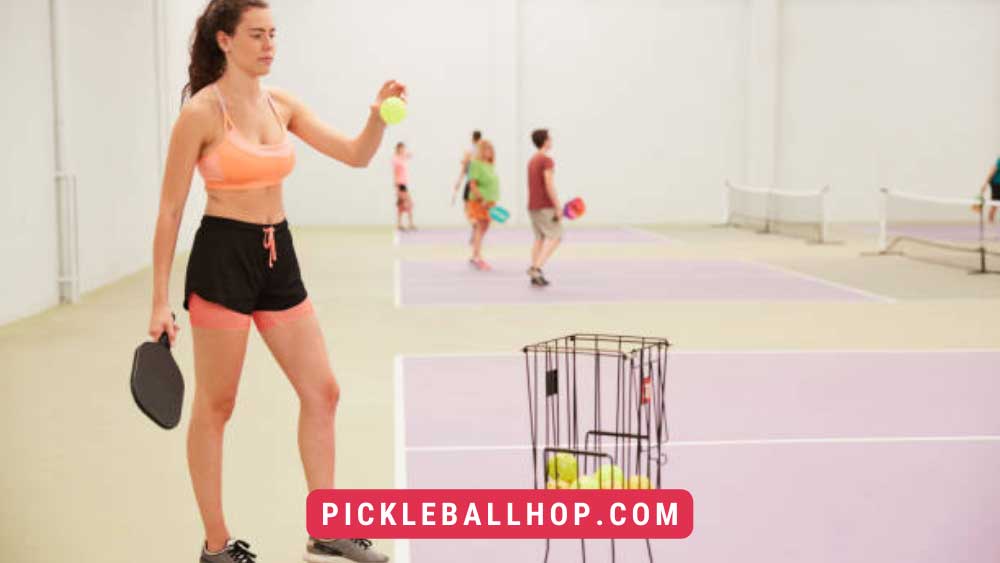 How about the Picklers? When it comes to noise restrictions, how do we go about it?
How about the Picklers? When it comes to noise restrictions, how do we go about it?
Its popularity can be attributed to the fact that pickleball is a social game.
A large number of players arrive by car, bike, or on foot. In some cases, they bring food and drinks as well as chairs. During the hours that they spend talking to each other, they discuss anything and everything. There is even music played sometimes.
Despite Pickleball’s popularity and small courts, it is still fairly popular. It is now possible to have four Pickleball courts that can accommodate 16 players in the same space as two tennis courts with eight players.
There will most likely be some noise in a small place if there are a lot of happy and active people. The best way to minimize the sound of happy people is through careful court placement and acoustic fencing.
Trade-offs in pickleball noise
Many players have experienced life-changing experiences from the game’s social aspect. Inclusion and loneliness are helped by the low learning threshold of the game.
During challenging times, such as COVID, it became a safe, life-improving outdoor activity for many.
We are more likely to die early if we live with loneliness. We are 30% more likely to die early if we are obese and 20% more likely to die prematurely if we drink excessively.
What is the best way to open up the Pickleball Party to more people so that the noise from happy Picklers is worth this quality of life trade-off?
Is it possible to develop a respectful, fun, and valuable way to include non-players on courts as well as apply noise mitigation techniques?
You may enjoy reading Best Lightweight Pickleball Paddles
Pickleball Noise: Who’s in Charge?
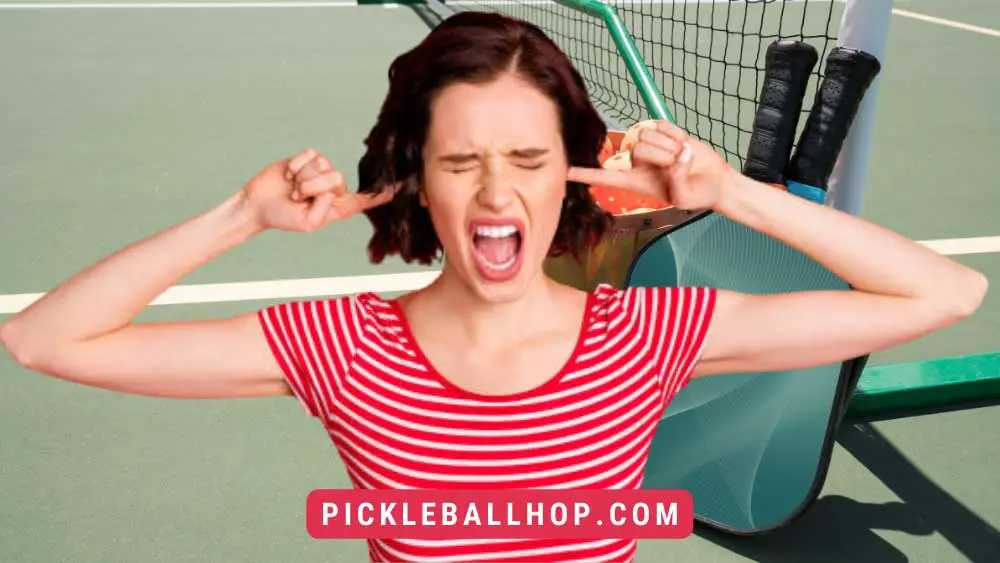 Because the USA Pickleball Association determines what paddles and balls are allowed in tournaments, it has the most influence. Pickleball noise is primarily caused by equipment.
Because the USA Pickleball Association determines what paddles and balls are allowed in tournaments, it has the most influence. Pickleball noise is primarily caused by equipment.
According to the USAPA’s official equipment guidelines, Pickleball balls and paddles should look the same and should be USAPA-approved for use in tournaments.
In the USAPA, paddle and ball noise have not been tested so far. The ‘green-zones’ list has been developed by communities such as Sun City Grand in response to this leadership vacuum.
Can manufacturers of USAPA-sanctioned equipment be proactive and design and produce quieter equipment?
In the short run, reducing Pickleball noise looks to be a grassroots effort driven by local communities and towns trying to balance their residents’ needs with the noise of the game.
Noise complaints and pickleball noise lawsuits may slow Pickleball growth, leading the USAPA to decide that getting involved is in the sport’s best interest.
A unique market opportunity is available to equipment manufacturers to provide solutions to noise issues.
Our fate is in our own hands until then!
You may enjoy reading How To Find Pickleball Courts Near Me
Pickleball Professionals vs. Peaceful Players
Pickleball may split into two families in the future. Some of these changes have already taken place.
Paddles and balls made of quieter materials are valued in one branch, while tournaments are valued in another.
Pickleball originated in a simple and low-key manner.
A family game that could be played by the whole family was the primary goal of Joel Pritchard, Bill Bell, and Barney McCallum when they created the game in 1965.
In the sport, plastic balls with holes, ping pong paddles, and ping pong paddles were used in place of badminton paddles. As the weekend progressed, the dads modified the rules and the game. In 1967, neighbor Bob O’Brian built the first permanent Pickleball court. As they say, the rest is history.
It’s great that Pickleball has evolved to the point of being a sport that is now gaining fame and money. It’s always a treat to watch the pros!
Nevertheless, we must not ignore the very reasons Pickleball has become so popular among non-professionals.
Everyone can play pickleball.
Pickleball Players: What Do They Want?
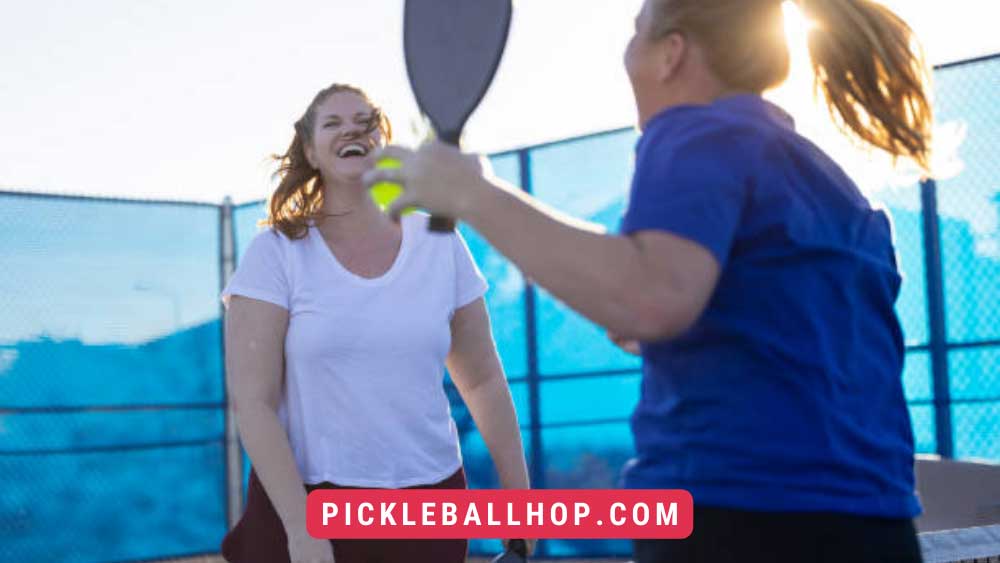 Seeing, hearing, and being valued are human needs. To become a person on whom others can rely, we are designed to be connected.
Seeing, hearing, and being valued are human needs. To become a person on whom others can rely, we are designed to be connected.
Our brains and biology are fabricated to facilitate this outcome, whether we are aware of it or not.
It may be for this reason that we enjoy team sports so much. To achieve a positive outcome for the team, each member has a distinct yet important role to play. Is winning the goal? Sometimes, not always.
It has been an integral part of every sport’s culture to develop its own flavor, which represents a lifestyle and a way of life over time.
The sport of pickleball is relatively new. As we observe, practice, and learn, it is still a work in progress. It is inevitable that we will make choices, some of which will be more helpful than others.
There is an interesting ‘Noise’ being generated by Pickleball right now in our communities. It is important for all the players to listen to that noise, observe it, and learn from it – associations, manufacturers, communities, and individuals.
What does it look like and feel like to you when you have a truly successful day on the Pickleball court?
Does it count as a win? There’s something thrilling about playing a tournament. Would you rather spend time in a park with people, learn a new skill, or maintain a healthy lifestyle?
Keeping a respectful relationship with others may be all of the above. It’s nice to see you. That’s what I hear. It is a pleasure to work with you.
You may enjoy reading How To Build An Outdoor Pickleball Court
What does Pickleball’s Future look like?
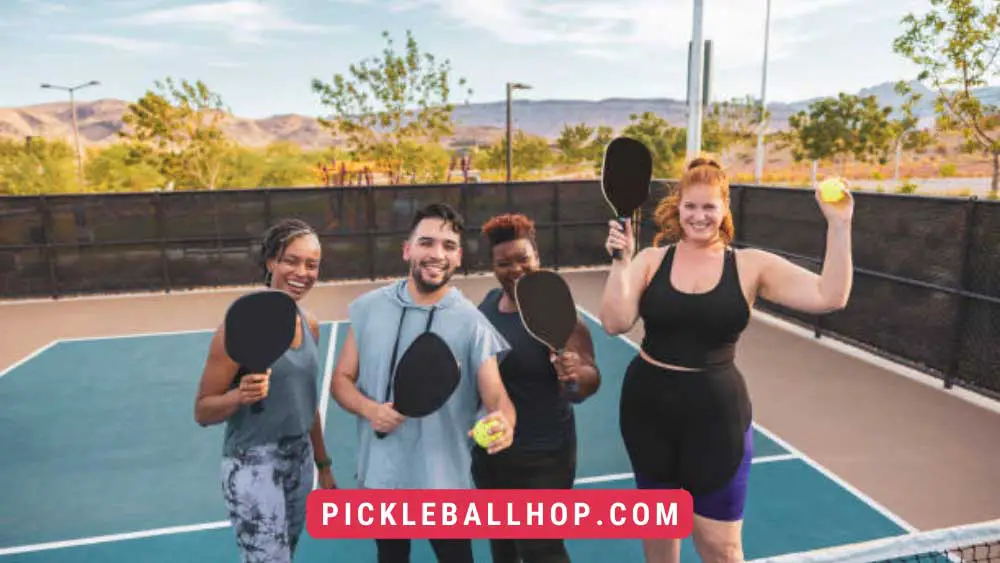 Maybe we can find a way to coexist respectfully between approved and unapproved Pickleball paddles and balls.
Maybe we can find a way to coexist respectfully between approved and unapproved Pickleball paddles and balls.
Play Pickleball with other Pickleball players, on and off the court, in a friendly environment.
A neighborhood that respects neighbors’ concerns and accommodates them.
Facilities that can be shared amicably by different sports.
It is possible to listen to and learn from the noise if we have patience. It is possible to create a more peaceful Pickleball environment, both on the court and within each individual player, when we all work together.
It is possible to change people through pickleball. If only we could find our way past all the noise.
You may enjoy reading Best Rated Pickleball Paddles

